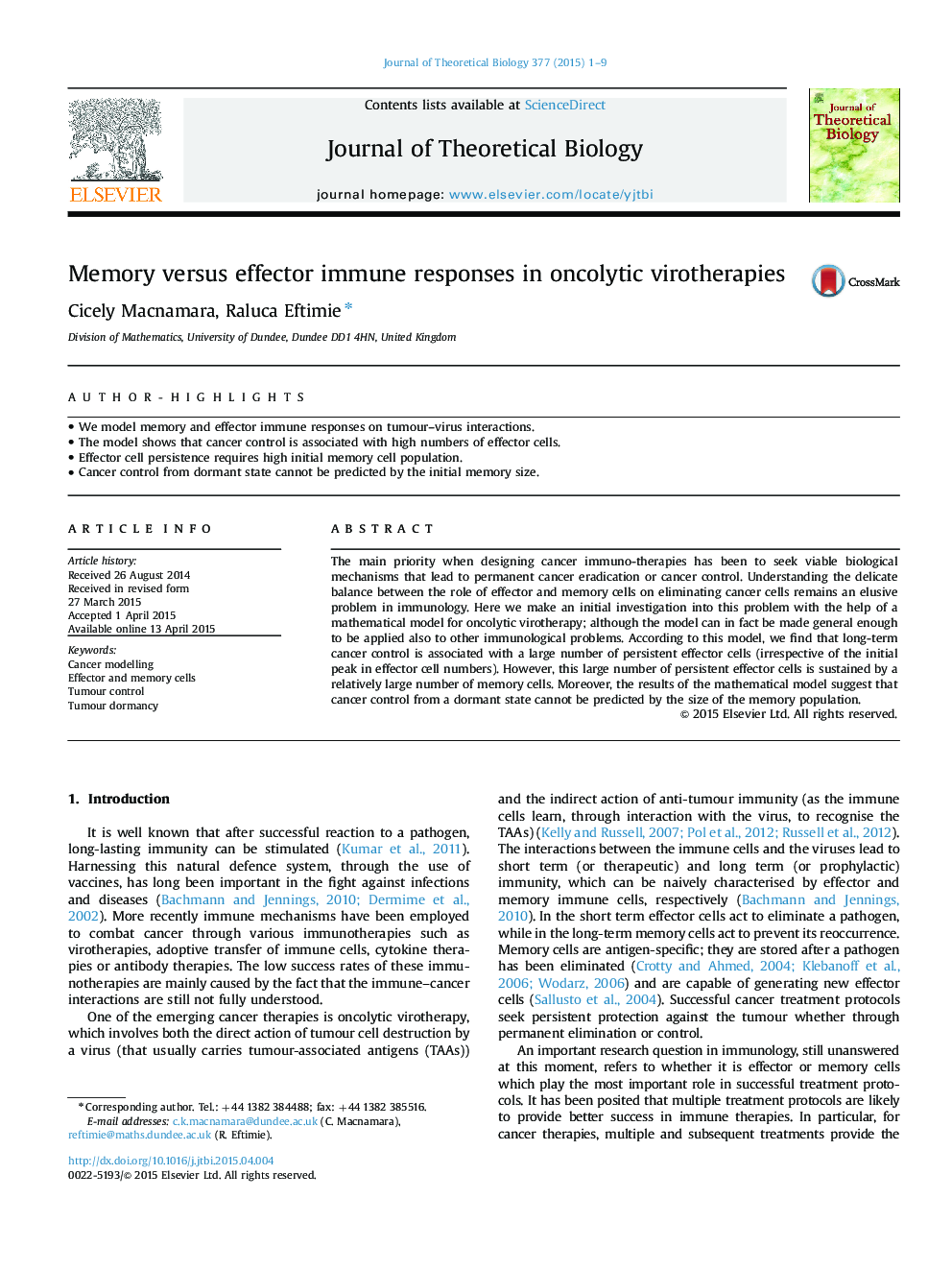| Article ID | Journal | Published Year | Pages | File Type |
|---|---|---|---|---|
| 4496048 | Journal of Theoretical Biology | 2015 | 9 Pages |
Author-Highlights•We model memory and effector immune responses on tumour–virus interactions.•The model shows that cancer control is associated with high numbers of effector cells.•Effector cell persistence requires high initial memory cell population.•Cancer control from dormant state cannot be predicted by the initial memory size.
The main priority when designing cancer immuno-therapies has been to seek viable biological mechanisms that lead to permanent cancer eradication or cancer control. Understanding the delicate balance between the role of effector and memory cells on eliminating cancer cells remains an elusive problem in immunology. Here we make an initial investigation into this problem with the help of a mathematical model for oncolytic virotherapy; although the model can in fact be made general enough to be applied also to other immunological problems. According to this model, we find that long-term cancer control is associated with a large number of persistent effector cells (irrespective of the initial peak in effector cell numbers). However, this large number of persistent effector cells is sustained by a relatively large number of memory cells. Moreover, the results of the mathematical model suggest that cancer control from a dormant state cannot be predicted by the size of the memory population.
